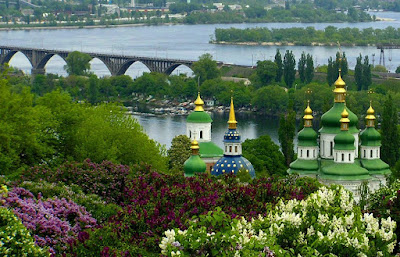
Kiev was the capital of the eastern Slavs’ first great civilisation, Kievan Rus, between the 10th and 13th centuries. Kiev knew its greatest prosperity at the end of 10th century, during the rule of Volodymyr the Great, who introduced Orthodox Christianity in 988.

Over the centuries Kiev has attracted numerous invaders. The city survived the destruction of the Mongols in 1240, was part of the Grand Duchy of Lithuania in the 14th century and then of the Polish-Lithuanian Commonwealth. In time, Kiev was occupied by Russia, and until the end of the 20th century, like all of Ukraine, was part of the USSR. In 1991 Ukraine regained its independence.

Today Kiev is a modern city with a population of 3 million, the capital of Ukraine. There are many architectural monuments, more than 100 museums, 33 theatres, 141 libraries. All the best universities are concentrated here, including the Kiev-Mohyla Academy, one of the oldest educational institutions in Europe.